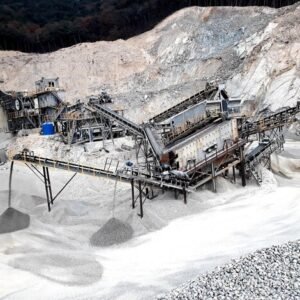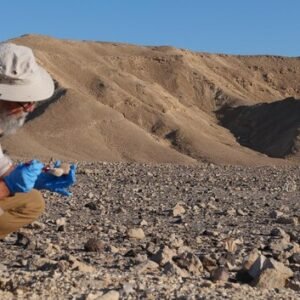Introduction
Natural clays like kaolin and bentonite have long been valued in skincare, wellness, and even industrial applications due to their unique properties. While both are types of clay minerals, they differ in composition, texture, color, and how they work on the skin. In this article, we’ll delve into what makes kaolin clay and bentonite clay distinct, explore their chemical and physical properties, and look at their common uses, so you can determine which one best suits your needs.
What is Kaolin Clay?
Kaolin clay, also known as china clay, is a soft, white clay named after the Kao-ling hill in China, where it was first mined. It’s composed primarily of the mineral kaolinite, a silicate mineral, and is known for its smooth, fine texture.
Properties of Kaolin Clay:
- Color: White, though it can vary to yellow, pink, or green due to different mineral impurities.
- Texture: Smooth and soft, making it gentle on sensitive skin.
- pH Level: Typically has a neutral to slightly acidic pH (around 4–5).
- Absorption: Has mild absorbent properties, making it ideal for sensitive and dry skin.
Chemical Composition: Kaolin clay mainly consists of aluminum silicate (Al₂Si₂O₅(OH)₄). It’s relatively inert, meaning it doesn’t react aggressively with other substances, which is why it’s popular in cosmetics and skincare.
Physical Properties:
- Low plasticity and shrinkage when dried.
- Good dispersion in water, forming a stable suspension.
- High melting point, which makes it suitable for industrial ceramics.
Benefits of Kaolin Clay
Kaolin clay is especially popular in skincare and cosmetics due to its gentle properties:
- Gentle Cleansing: Kaolin absorbs excess oils without stripping the skin of natural moisture, making it suitable for dry or sensitive skin.
- Exfoliation: It offers a mild, non-abrasive exfoliating effect, helping to remove dead skin cells without irritation.
- Oil Control: While not as absorbent as bentonite, it does help in absorbing excess oils, keeping the skin matte and fresh.
- Calming Effect: Kaolin is known to soothe irritated or inflamed skin, ideal for those with acne, rashes, or other skin sensitivities.
What is Bentonite Clay?
Bentonite clay, derived from volcanic ash, is named after Fort Benton in Wyoming, where large deposits are found. It is primarily composed of montmorillonite, a clay mineral with a high capacity to absorb water, causing it to expand.
Properties of Bentonite Clay:
- Color: Typically gray or cream but can vary based on the region it’s sourced from.
- Texture: Fine powder but can become very thick when hydrated due to its water retention.
- pH Level: Slightly alkaline (around 8–9), which can benefit those looking to balance skin pH.
- Absorption: Highly absorbent and can expand up to 20 times its dry volume.
Chemical Composition: Bentonite is rich in silica, aluminum, calcium, magnesium, and iron. Its primary mineral, montmorillonite, allows it to draw out toxins and absorb impurities.
Physical Properties:
- High plasticity and shrinkage when dried.
- Excellent swelling capacity in the presence of water.
- Ionic charge: Bentonite clay has a negative ionic charge, which helps it attract positively charged toxins.
Benefits of Bentonite Clay
Due to its unique properties, bentonite clay offers powerful cleansing and purifying effects, making it suitable for:
- Detoxification: Bentonite’s negative charge helps it bond with toxins and heavy metals in the skin, drawing them out effectively.
- Absorbing Excess Oil and Impurities: Its strong absorption capabilities make it ideal for oily or acne-prone skin.
- Deep Pore Cleansing: Bentonite reaches deep into pores to pull out dirt and impurities, leaving skin refreshed and revitalized.
- Healing Wounds and Bites: Bentonite can soothe irritated skin and has been used to help with bug bites, rashes, and other skin ailments due to its ability to draw out toxins.
Key Differences Between Kaolin Clay and Bentonite Clay
| Feature | Kaolin Clay | Bentonite Clay |
| Color | White, pink, yellow, green | Gray to cream-colored |
| Texture | Smooth, fine | Fine but becomes thick and gel-like when hydrated |
| Absorbency | Mild, suitable for sensitive skin | Strong, ideal for oily skin and deep cleansing |
| pH Level | Neutral to slightly acidic (4–5) | Slightly alkaline (8–9) |
| Best for | Dry or sensitive skin, mild exfoliation | Oily or acne-prone skin, detoxification |
| Common Uses | Face masks, powders, gentle cleansers | Face masks, poultices, detox treatments |
Uses and Applications
In Skincare and Beauty
Kaolin Clay is often used in:
- Face masks: to provide gentle exfoliation and oil absorption.
- Cleansers: to remove impurities without drying out the skin.
- Body powders: due to its absorbent and gentle nature.
Bentonite Clay is commonly found in:
- Detox masks and treatments: to deeply cleanse the pores.
- Acne treatments: to reduce excess sebum and clear blemishes.
- Poultices: for drawing out toxins from bites, stings, and minor wounds.
In Health and Wellness
Some people take bentonite clay internally (consulting a healthcare provider first), believing it helps to remove toxins from the digestive tract, while kaolin has a history of use as an anti-diarrheal agent. Both types are valued in holistic practices, but bentonite’s ionic properties make it particularly popular in detox regimens.
In Industrial Applications
- Kaolin Clay: Used in ceramics, paper production, and as a filler in paint and rubber.
- Bentonite Clay: Employed in drilling mud, construction materials, and as a bonding agent in iron ore processing.
Choosing the Right Clay for Your Skin Type
When selecting between kaolin and bentonite clay, it’s essential to consider your skin type and desired outcome:
- For Sensitive or Dry Skin: Kaolin clay is ideal due to its mild nature, gentle exfoliating properties, and less intensive absorption. It’s excellent for maintaining skin balance without over-drying.
- For Oily or Acne-Prone Skin: Bentonite clay is a powerful option for those dealing with excess oil, clogged pores, and acne. Its strong absorbent properties can help reduce oil, detoxify, and purify the skin deeply.
How to Use Kaolin and Bentonite Clay
Kaolin Clay Mask
- Mix 1–2 teaspoons of kaolin clay with a small amount of water to form a smooth paste.
- Apply a thin layer to clean skin, avoiding the eye area.
- Leave on for 10–15 minutes, then rinse with lukewarm water.
This mask can be used 1–2 times a week to maintain balanced, healthy skin.
Bentonite Clay Mask
- Combine 1–2 teaspoons of bentonite clay with water or apple cider vinegar for added cleansing.
- Stir to form a thick paste, avoiding metal bowls or utensils to prevent ion interference.
- Apply to clean skin and leave for 10–15 minutes. You may feel a tightening sensation as it dries.
- Rinse thoroughly and follow up with a moisturizer, as bentonite can leave skin feeling dry.
A bentonite mask can be used once a week or as needed, especially for treating acne or detoxifying.
Conclusion
Kaolin and bentonite clays each offer unique benefits suited to different skin types and purposes. Kaolin’s gentle, soothing properties make it a favorite for sensitive or dry skin, while bentonite’s detoxifying power is excellent for oily or acne-prone skin. By understanding your skin’s needs, you can choose the right clay to incorporate into your skincare routine for optimal results.






